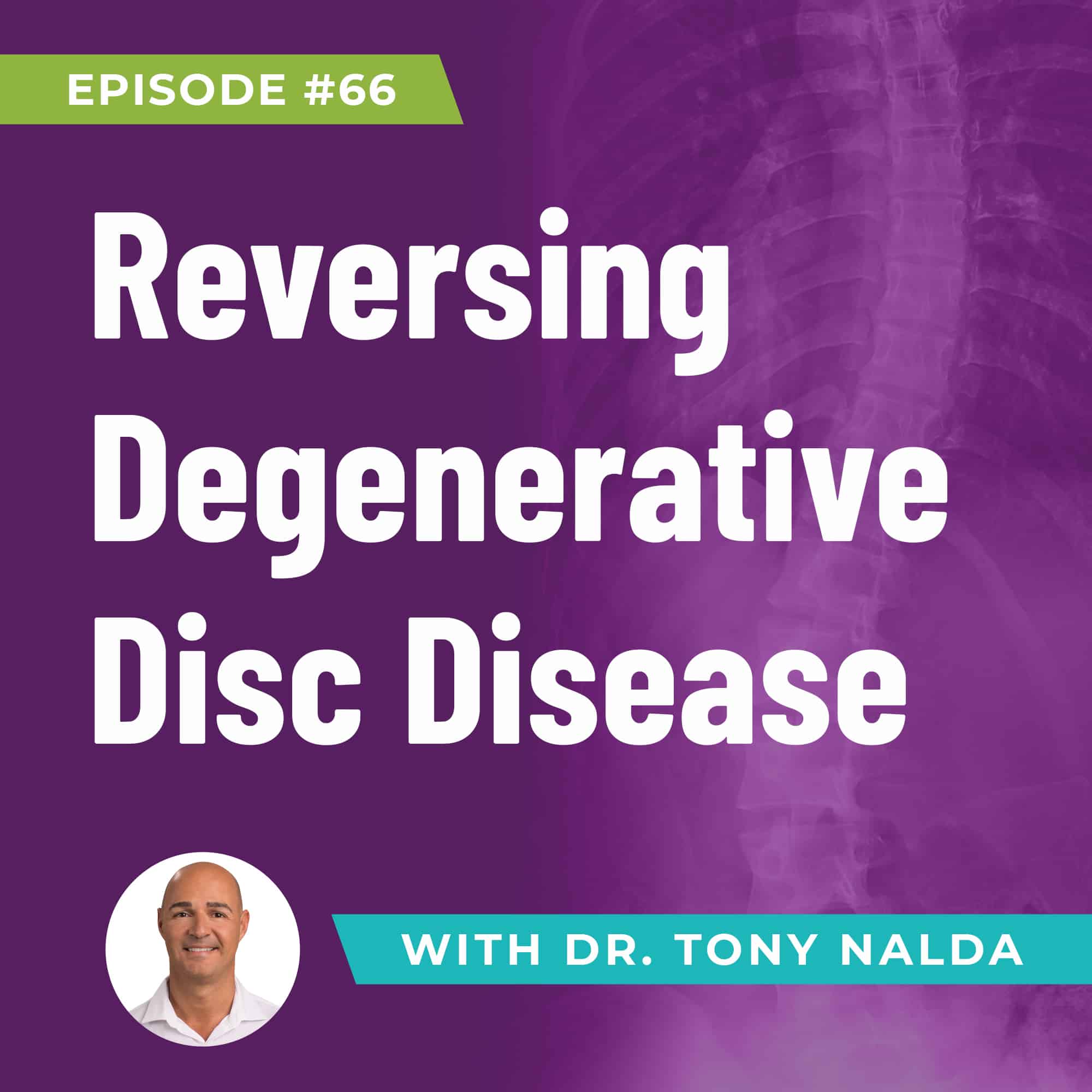Episode 66: Reversing Degenerative Disc Disease
In today’s episode, Dr. Tony Nalda sheds light on common misconceptions about Degenerative Disc Disease. Contrary to popular belief, degenerative disc disease is not a contagious or systemic illness. Instead, it refers to the degeneration of the discs located between the vertebrae in your spine.
What is Degenerative Disc Disease
The discs in your spine serve as cushions and allow for flexibility, enabling you to move and bend. They also act as shock absorbers, distributing mechanical stresses throughout your body. When the spine loses its normal alignment due to factors like injury, scoliosis, or poor posture, certain areas of the spine may degenerate faster. This localized degeneration is what we refer to as degenerative disc disease.
Symptoms of Degenerative Disc Disease
- Decreased flexibility: One of the primary signs of degenerative disc disease is a decrease in flexibility in the affected area, which can limit your range of motion.
- Back pain: As the degeneration progresses, it can lead to localized back pain in the affected area of the spine.
- Radiating pains: Degenerative disc disease can cause radiating pains, such as sciatica or thoracic outlet syndrome, which can affect the neck, head, arms, or legs due to nerve compression.
To potentially reverse the effects of degenerative disc disease, it is crucial to address the underlying cause.
The first step is to restore normal alignment in the spine. By realigning the spine, which may involve addressing misalignment or scoliosis, the issues contributing to disc degeneration can be mitigated. This realignment creates a more favorable environment for healing. Although spinal discs lose their ability to heal as one reaches adulthood, promoting the best conditions for healing is essential. By focusing on the cause of degeneration, such as misalignment, it is possible to improve the chances of the discs healing themselves to some extent. Additionally, improving the flexibility of the affected discs plays a vital role. While complete restoration of disc height may not be possible, enhancing flexibility can alleviate symptoms and support healing.
By taking a proactive approach and addressing the root cause of degenerative disc disease, it is possible to prevent further degeneration and potentially reverse some of its effects.
To gain a better understanding of degenerative disc disease, its causes, and the importance of addressing the underlying alignment issues, tune in to Dr. Tony Nalda’s podcast.
Artlist.io 847544
Podcast: Play in new window | Download
Subscribe: RSS
Dr. Tony Nalda
DOCTOR OF CHIROPRACTIC
After receiving an undergraduate degree in psychology and his Doctorate of Chiropractic from Life University, Dr. Nalda settled in Celebration, Florida and proceeded to build one of Central Florida’s most successful chiropractic clinics.
His experience with patients suffering from scoliosis, and the confusion and frustration they faced, led him to seek a specialty in scoliosis care. In 2006 he completed his Intensive Care Certification from CLEAR Institute, a leading scoliosis educational and certification center.
About Dr. Tony Nalda
 Ready to explore scoliosis treatment? Contact Us Now
Ready to explore scoliosis treatment? Contact Us Now








